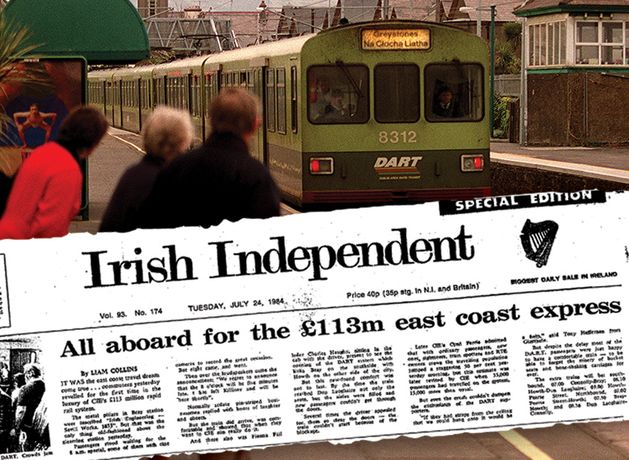A waste of taxpayers’ money or a way to restore Joyce’s Dublin? People had mixed opinions of the Dart when it first opened in July 1984, writes historian Donal Fallon, but it has stood the test of time, and has been immortalised spectacularly in Irish literature, music and film
The Irish Independent’s report on the first day of the Dart
In 1986, with the Dart still something of a novelty in the lives of the citizenry of Dublin and neighbouring Wicklow, the poet and historian Vincent Caprani embarked on a journey from one end of the line to the other. In A View From The Dart, he went on the “electric odyssey”, describing only what was visible from the carriage or a short stroll from the stations. To Caprani, the Dart amounted to “a rapidly-moving corridor leading into a sprawling museum — the treasure-house of Dublin city and its maritime environs”. The morning commuters might not feel as romantic on the subject, but all would agree that Dublin is a better city for it.
For any city, transportation is a key chapter in the story of its development. The 19th-century townships, Dublin’s first emerging middle-class suburbs, did well because they could simultaneously be near the city centre thanks to new forms of transportation, but not too close for comfort with a city that was viewed as being in decline.

